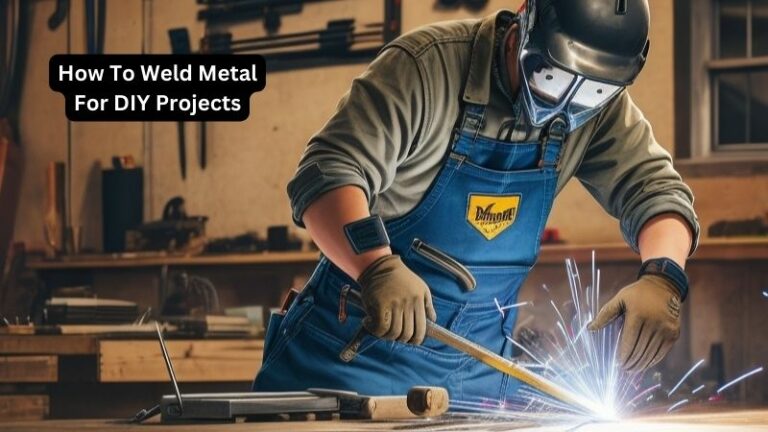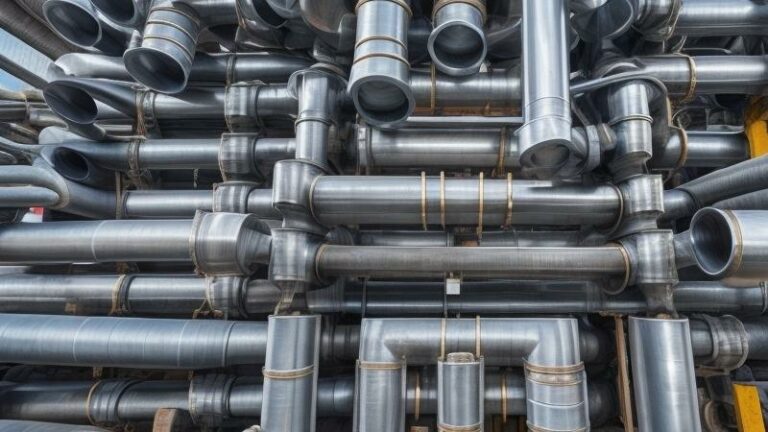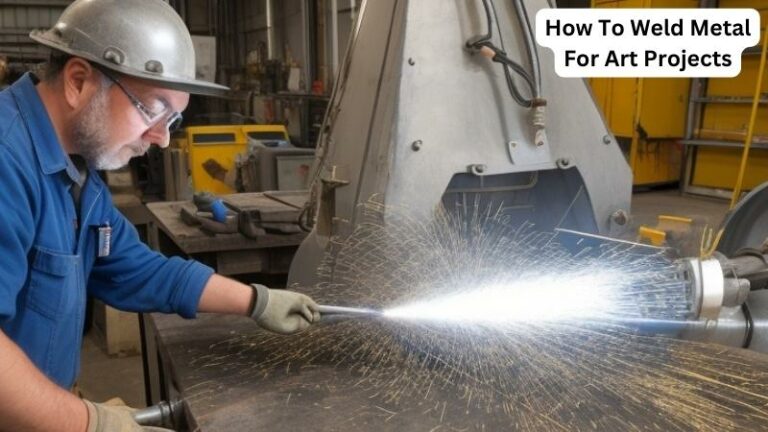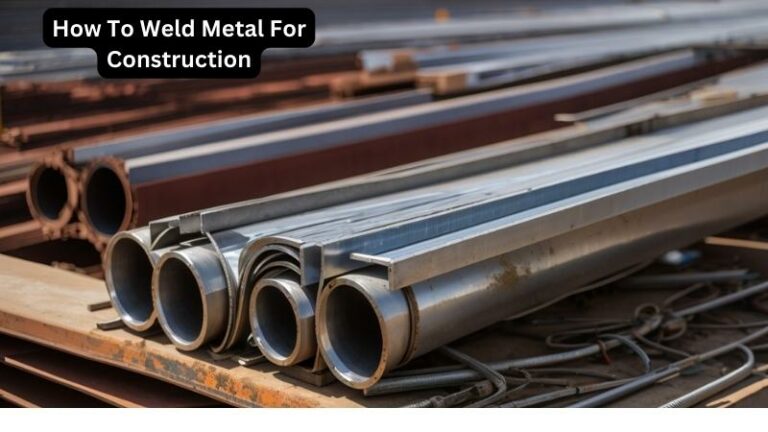How To Weld Metal For A Strong Bond
Welding is an essential skill for any aspiring metalworker or DIY enthusiast. The ability to create strong, durable bonds between metal pieces opens up a world of possibilities in fabrication and repair projects. Whether you’re looking to construct a custom piece of furniture or fix a broken rail, mastering the art of welding can give you the power to bring your creations to life. In this guide, we will delve into the fundamental techniques and principles of welding, equipping you with the knowledge to achieve flawless welds and create a bond that can withstand the test of time.
From the ancient blacksmiths forging weapons to the modern-day construction industry, welding has been instrumental in shaping the world we live in. However, the process of welding is not just about joining two pieces of metal together; it requires a delicate balance of precision, skill, and knowledge. In this comprehensive guide, we will explore the various types of welding techniques, such as arc welding, MIG welding, and TIG welding, and delve into the importance of choosing the right equipment and safety measures. Whether you’re a novice looking to start your welding journey or an experienced welder seeking to refine your skills, this guide will serve as your indispensable companion, providing you with the tools and techniques to weld metal for a strong and enduring bond.
- Prepare the metal surfaces by cleaning them thoroughly.
- Choose the appropriate welding method based on the type of metal.
- Secure the metal pieces in place using clamps or fixtures.
- Wear safety gear, including welding gloves and goggles.
- Set up the welding equipment and adjust the settings according to the metal thickness.
- Start welding by creating a bead along the joint, moving steadily and evenly.
- Allow the weld to cool and then inspect it for any defects.
- Repeat the process if necessary to achieve a strong bond.
How to Weld Metal for a Strong Bond
Welding is a crucial process in metal fabrication, allowing you to join two or more pieces of metal together to create a strong and durable bond. Whether you are a beginner or an experienced welder, mastering the art of welding is essential. In this article, we will guide you through the step-by-step process of welding metal for a strong bond. From preparing the materials to executing the weld, we will cover everything you need to know to ensure a successful weld.
Step 1: Prepare the Materials
Before you begin welding, it is important to properly prepare the materials you will be working with. Start by cleaning the metal surfaces to remove any dirt, rust, or paint. Use a wire brush or sandpaper to achieve a clean and smooth surface. Next, ensure that the metal pieces are properly aligned and secured using clamps or a vice grip. This will prevent any movement during the welding process and ensure accurate positioning.
Additionally, it is crucial to select the appropriate welding method and electrode for the specific type of metal you are working with. Different metals require different welding techniques and electrodes, so be sure to consult the manufacturer’s guidelines or seek professional advice if you are unsure.
Step 2: Set Up the Welding Equipment
Once the materials are prepared, it is time to set up the welding equipment. Begin by wearing the necessary safety gear, including a welding helmet, gloves, and protective clothing. This will protect you from sparks, heat, and harmful fumes.
Next, ensure that the welding machine is properly connected to a power source and that all cables and connections are secure. Adjust the welding machine settings based on the thickness of the metal and the welding technique you will be using. Consult the machine’s manual for specific instructions on the appropriate settings.
Finally, position the metal pieces in a way that allows you to comfortably access the welding area. Adjust the workpiece angle and height to ensure optimal visibility and ease of movement during the welding process.
Step 3: Execute the Weld
With the materials prepared and the equipment set up, it is time to execute the weld. Start by striking an arc between the electrode and the metal surface. This can be done by tapping the electrode against the metal or using a scratch start technique, depending on the welding method you are using.
Once the arc is established, maintain a steady hand and move the electrode slowly along the joint, creating a small molten pool. Ensure that the electrode is angled correctly to achieve proper penetration and create a strong bond between the metal pieces.
Continue welding along the joint, making sure to maintain a consistent speed and distance from the joint. Avoid excessive heat buildup by moving the electrode in a zigzag pattern to distribute the heat evenly. Remember to periodically pause to allow the weld to cool and prevent overheating.
After completing the weld, inspect it for any defects or imperfections. Use a wire brush or grinder to remove any slag or spatter, and check for proper penetration and uniformity. If necessary, perform additional passes to strengthen the bond and achieve the desired result.
This step-by-step guide should help you weld metal for a strong bond. Remember to always prioritize safety, follow the manufacturer’s instructions, and practice proper welding techniques. With time and practice, you will be able to master the art of welding and create high-quality and durable welds.
Frequently Asked Questions
Welding is a process that involves joining two pieces of metal together by melting the edges and allowing them to cool and solidify. There are different welding techniques available, such as arc welding, MIG welding, and TIG welding, each with its own advantages and applications.
1. Cleanliness: Before welding, the surfaces of the metal pieces should be thoroughly cleaned to remove any dirt, rust, or paint. This ensures proper fusion and prevents contamination in the weld zone.
2. Proper heat control: It is crucial to maintain the right temperature during welding. Excessive heat can weaken the metal, while insufficient heat may result in poor fusion. Following the recommended welding parameters for the specific metal and welding technique is essential.
What safety precautions should be taken while welding?
Welding involves working with high temperatures and potentially dangerous equipment. Here are some safety precautions to follow:
1. Wear protective gear: This includes a welding helmet with a properly shaded lens, flame-resistant clothing, gloves, and safety shoes. The gear helps protect against sparks, UV radiation, and hot metal.
2. Provide proper ventilation: Welding produces fumes and gases that can be hazardous if inhaled. Make sure to work in a well-ventilated area or use local exhaust ventilation systems to remove the fumes.
What are some common welding defects and how can they be prevented?
Common welding defects include porosity, undercutting, and lack of fusion. These can weaken the weld and compromise its strength. To prevent these defects:
1. Ensure proper joint preparation: Clean and bevel the edges of the metal pieces to ensure proper fit-up and alignment. This helps minimize the risk of gaps and incomplete fusion.
2. Control welding parameters: Follow the recommended welding parameters for the specific metal and welding technique. This includes the correct heat input, travel speed, and electrode angle. Proper control of these parameters helps reduce the likelihood of defects.
What post-welding steps should be taken to ensure a strong bond?
After welding, it is important to perform post-welding steps to ensure a strong bond:
1. Remove slag and spatter: Slag and spatter are byproducts of the welding process that can weaken the weld. Use appropriate tools to remove them, ensuring a clean and smooth surface.
2. Conduct a visual inspection: Check the weld for any visible defects, such as cracks or incomplete fusion. If any issues are detected, they should be addressed promptly to prevent further weakening of the bond.

In conclusion, mastering the art of welding metal is a valuable skill that can lead to strong and enduring bonds. By understanding the different types of welding techniques and their applications, as well as the necessary safety precautions, individuals can confidently embark on their welding journey. Through practice and dedication, one can refine their technique and achieve impeccable results.
Welding not only offers practical applications in various industries, but it also provides a sense of accomplishment and creative expression. The ability to transform separate pieces of metal into a unified and solid structure is truly awe-inspiring. Whether it is constructing a sculpture, repairing machinery, or building infrastructure, welding empowers individuals to shape their world.
So, if you are interested in learning how to weld metal for a strong bond, take the time to invest in proper training, acquire the necessary equipment, and practice diligently. With patience and perseverance, you can become skilled in welding and unlock a world of possibilities. Remember, the key to success lies in understanding the fundamentals, practicing consistently, and always prioritizing safety. Embrace the art of welding, and watch as your creations come to life, built on the strong foundation of a well-executed weld.



